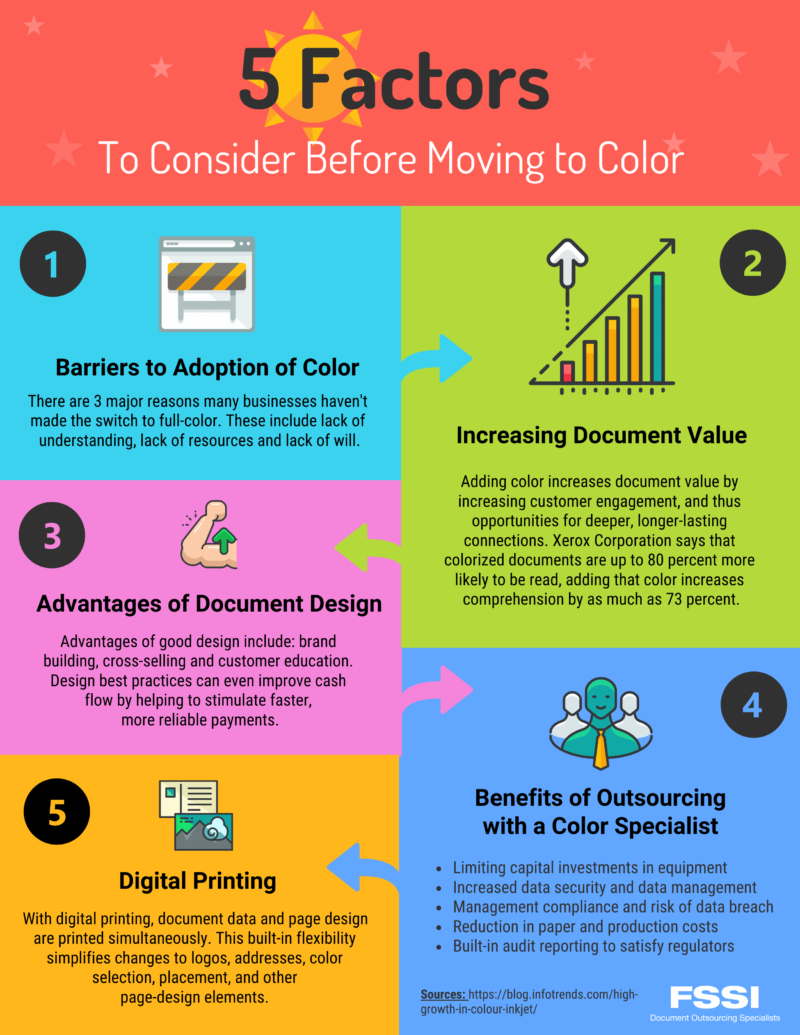Digital Printing for Beginners
Digital Printing for Beginners
Blog Article
What Does Digital Printing Do?
Table of ContentsNot known Facts About Digital PrintingHow Digital Printing can Save You Time, Stress, and Money.Digital Printing Things To Know Before You Get ThisDigital Printing for BeginnersThe smart Trick of Digital Printing That Nobody is DiscussingThe 45-Second Trick For Digital Printing
Variable data printing, such as direct mail with individualized codes and addresses, is ideally fit for electronic printing. Digital fast printing just needs four actions of style, review, printing and binding to get everything done. Digital fast printing has an unparalleled benefit: print on demand.According to PMMI, electronic printing allows brand names and manufacturers to react swiftly to consumer demands while improving the supply chain, decreasing warehousing cost and waste, and enjoying faster time to market. That all noises wonderful, yet how does this technology do all that? The major differentiator of these technologies is that there are no set up charges and no plates with electronic printing.
Digital Printing Things To Know Before You Buy
According to Wikipedia, the biggest difference in between electronic printing and conventional methods such as lithography, flexography, gravure, or letterpress - Digital Printing is that there is no need to replace printing plates in electronic printing, whereas in these analog printing techniques home plates are repetitively replaced. This causes quicker turnaround time and decreases cost when using electronic printing.
Speedy manufacturing implies getting your product to market quicker. It additionally suggests it's easier and faster to make adjustments later, when you change a recipe, add a SKU, or create seasonal packaging. Digital printing is highly adaptable, so it's easy to make changes to the bundle style promptly. All of it returns to home plates.
Extra inventory can suggest even more waste later on. With traditional printing approaches, short-run printing is just not feasible. Because an excellent design can make or damage your product, digital printing consistently produces high-quality, clear and vibrant graphics each time. Digital printing on versatile bags adds the brilliant, vibrant, and exact graphics that almost bid customers to connect and touch them.
Digital printing is the process of printing digital-based pictures straight onto a range of media substrates. There is no requirement for a printing plate, unlike with countered printing. Digital documents such as PDFs or desktop computer publishing data can be sent out straight to the digital printing press to publish on paper, photo paper, canvas, fabric, synthetics, cardstock and other substrates.
Getting My Digital Printing To Work
According to PMMI, electronic printing allows brand names and makers to react rapidly to client demands while improving the supply chain, lowering warehousing cost and waste, and appreciating faster time to market. That all noises fantastic, yet exactly how does this technology do all that? The major differentiator of these modern technologies is that there are no set-up fees and no plates with electronic printing.
This results in quicker turn-around time and reduces price when making use of electronic printing.

All about Digital Printing
Extra inventory can mean more waste down the road. With traditional printing methods, short-run printing is simply not possible. Because a terrific design can make or break your item, electronic printing regularly produces high-quality, clear and colorful graphics each time. Digital printing on flexible bags adds the brilliant, vivid, and exact graphics that virtually beckon consumers additional reading to reach out and touch them.

According to PMMI, digital printing enables brand names and suppliers to respond swiftly to customer demands while enhancing the supply chain, decreasing warehousing expense and waste, and appreciating faster time to market. That all audios excellent, yet just how does this innovation do all that? The major differentiator of these innovations is that there are no set-up fees and no plates with electronic printing.
The 5-Minute Rule for Digital Printing
This results in quicker turn-around time and lowers price when using electronic printing.
Digital printing is highly flexible, so it's easy to make changes to the bundle style quickly. It all goes back to the plates.

The Ultimate Guide To Digital Printing
Digital printing is the process of printing digital-based images straight onto a range of media substrates. additional info There is no need for a printing plate, unlike with countered printing. Digital data such as PDFs or desktop computer posting documents can be sent out straight to the digital printing machine to publish on paper, image paper, canvas, fabric, synthetics, cardstock and various other substratums.
Report this page